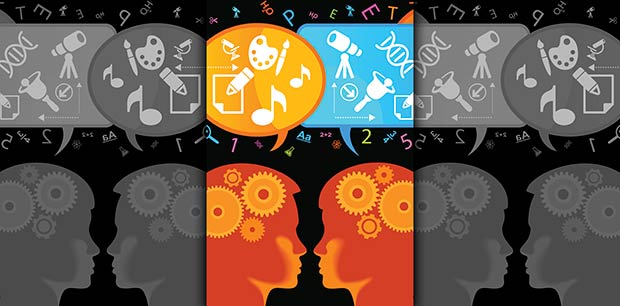SEAD conference champions integrating art, science learning
SEAD Conference
Invitation only
May 16, 2013
Smithsonian Discovery Theater
D.C. Art Sciences Evening Rendezvous
Public Event
6 p.m. May 16
Room 100
Keck Center
500 5th St. NW
Washington, D.C.
Strategies for incorporating art and design in science and technical education and vice versa were discussed at a May 16, 2013 Washington D.C. conference organized by the network for [Sciences, Engineering, Arts and Design] (http://sead.viz.tamu.edu) (SEAD), a National Science Foundation-funded group championing the integration of art and science in the classroom.
"We finished the conference with refreshed enthusiasm and some new connections to pursue," said SEAD's leader, Carol LaFayette, associate professor of visualization at Texas A&M, and director of the College of Architecture's Institute for Creative Innovation.
SEAD participants discussed their efforts to further the STEM to STEAM movement — adding an "A," art and design components, to "STEM," — science, technology, engineering and mathematics education.
Cristin Dorgelo from the White House's Office of Science and Technology Policy spoke of his office's new series of Google + sites highlighting the future of science, technology and innovation in the U.S.
Carol Strohecker of the University of North Carolina's Center for Design Innovation discussed the center's workshops for people of diverse ages and backgrounds that strengthen participants' communication and social skills as well as their STEM abilities.
SEAD partner Brian K. Smith of the Rhode Island School of Design spoke about ICEE Success, which works with partners in K-12 education to integrate innovation thinking with required learning standards.
Conference participants also reviewed approximately 200 [white papers] (http://seadnetwork.wordpress.com/white-paper-abstracts/) advancing tactics and programs relevant to the STEM to STEAM movement.
One of the papers, by Robert Root-Bernstein, professor of physiology at Michigan State University, noted that award-winning scientists, engineers and founders of high-tech companies who were introduced to arts and crafts in elementary and middle school tended to practice arts or crafts into adulthood.
“Because education in the U.S. and throughout much of the world marginalizes arts and crafts education,” said Root-Bernstein, “formal K-12 schooling as it is structured today is unlikely to prepare students adequately in the range of skills they will need to reach the top of science and engineering fields.”
An understanding of how arts and crafts make innovation in science and engineering possible is needed, he said, to develop students' full potential.
In addition to the white paper proposals, conference participants also discussed how cross-disciplinary learning can enhance informal education settings such as museums, libraries, after-school programs or at home.
The conference included representatives from education and corporate sectors and SEAD partners including the [National Endowment for the Arts] (http://www.nea.gov) , which co-hosted the conference, the [National Science Foundation] (http://www.nsf.gov) and the [National Education Association] (http://www.nea.org) .
The invitation-only event was held in the [Discovery Theater] (http://discoverytheater.org) at the [Smithsonian Institution] (http://www.si.edu) , another SEAD partner.
Afterwards, the STEM-to-STEAM discussion opened to the public at the [D.C. Art Science Evening Rendezvous] (http://www.cpnas.org/events/051613.html) set in Washington D.C.'s Keck Center. Individuals had an opportunity to introduce projects including art and science components.
Hosted by the [National Academy of Sciences] (http://www.nasonline.org) , the evening rendezvous also featured a SEAD panel discussion of conference topics that was streamed live on the Internet.
Founded in 2011, SEAD has pursued an active research and outreach agenda, developing strategies and hosting workshops promoting the integration of art and design in technical education.
“Since its inception, SEAD has gained an international groundswell of interest and enthusiastic support for creative, innovative research and practice through exchanges across traditional boundaries,” she said. “Everyone wants to learn more about this phenomenon and how it can be nurtured. Contributors include educators, researchers, artists, scientists, engineers, designers, entrepreneurs, and many others.”
Past and ongoing SEAD initiatives include developing STEAM curricula for grades K-12 in a creativity workshop at Texas A&M’s Langford Architecture Center March 9-10, 2013 and researching case studies of STEAM learning experiences in K-12, higher education, and DIY/maker communities across the U.S.
Tags
Related Posts

Research, creative work presented at annual symposium

Chillennium '17 breaks Guinness World Record

Initiative fusing arts, technology education gains momentum

Students created video games in 48 hours at game jam

Students created games in 48 hours at Chillennium 2018
Follow Us
Facebook Twitter Vimeo Youtube Flickr RSS
Recent Posts

Planning prof heads study of disaster housing aid

A message from the dean

Former student remembered as expert planner

Leading educator named new head of Architecture Dept.





_thumbnail_small.png)
